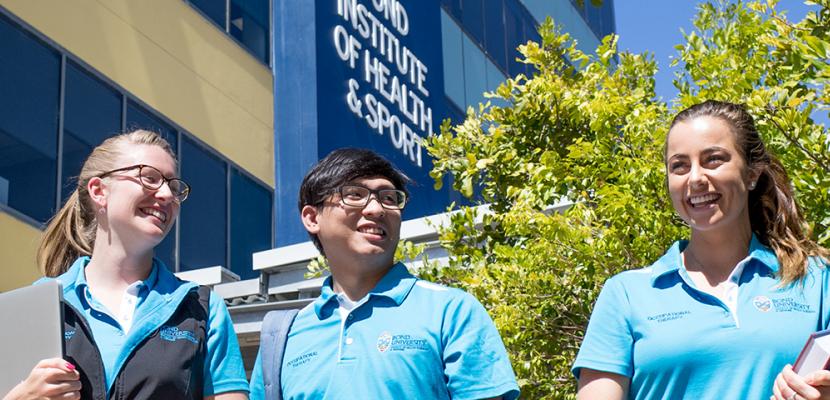
Written by Professor Susan Brandis, Head of Program, Occupational Therapy.
The COVID19 pandemic has had many impacts, none more noticeable than the rapid rise in activity such as operatic concertos in Italy, balcony piano performances in Spain and the numerous other seemingly bizarre but somehow intriguing displays of human creativity. My Facebook feed shared images of people mimicking famous paintings which were incredibly clever. I saw rolls of toilet paper shaped into remarkable sculptures and works of art. More recently I read of a woman who had designed and made a wardrobe of clothing from takeaway packages while in quarantine in a Melbourne hotel. The supermarkets were stripped of baking ingredients, banana bread made a comeback and the sales at Bunnings boomed. Bored Panda, was in fact an incredibly bored little panda, and people expressed this boredom in many different ways.
Boredom is an interesting phenomena, defined as a mental state that arises from an excess of something or repetitive or monotonous situations. It is a state that animals will avoid and excessive boredom can lead to maladaptive behaviours (such as excess alcohol, rocking and head banging) and stress. (O'Brien, 2014)
Many years ago, as a new graduate occupational therapist in an acute Brisbane hospital I would get referrals from the medical staff which read “Request: OT please, Diagnosis: patient bored”. I recall my supervisor telling me to disregard these as it was not my role to entertain the patients. My role was to assess, provide treatment and facilitate the patients return to independence. As OTs we turned our nose up at these types of referrals which were one step up from the referrals for “emergency basket weaving”. This was the late seventies, the nurses wore veils, the doctors paraded in white coats, and the role of OT was not fully understood.
Over time OTs moved from craft-based therapies in attempt to be taken seriously by the health and medical community. This also paralleled the “sicker and quicker phenomena” characterised by increasingly more acutely unwell patients and shorter lengths of hospital stay. Patients were now kept busy with a never-ending array of medical testing to be discharged in a split second. It soon became obvious that no one really wants to make a pair of sheepskin moccasins while in the advanced stages of sepsis. And who, in any case has time to finish a pair as the bed needed to be cleared and cleaned for the next patient! We tossed the craft in the cupboard and starting splinting anything that moved.
Boredom had sort of disappeared from the OT vernacular…almost. The term “occupational deprivation” was introduced in the 90s (Wilcock, 1993). What Wilcock proposed was that humans are “occupational beings” and that purposeful activity in “occupations” differentiates humans from other lifeforms. We have the choice to do whatever and whenever we want. There are 24 hours in a day, and we fill this time with a balance of work, self-care and leisure. When we are unable to engage in occupations, the body experiences stress. The model has been applied to maladaptive behaviours such as self-harm in prisoners (Molineux & Whiteford, 1999) and asylum seekers (Crawford, Turpin, Nayar, Steel, & Durand, 2016). Occupation has been viewed as a human right and the scientific model of occupational deprivation has such status that in 2016 the professional body OT Australia issued a position statement (OT Australia, 2016). The statement asserts “that health and wellbeing depend upon being able to engage in occupations that are meaningful and of one’s choosing” and “conversely, being prevented from engaging in meaningful occupations can lead to psychological and physical illness, impairment and reduced productivity” p 455 (OT Australia, 2016). It aspires to create a fair and inclusive society where all people can “participate” in occupation (in the broad sense). While the statement mentions a number of at-risk groups such as those incarcerated, marginalised, refugees and asylum seekers, the fundamental theory has application to the recent COVID19 lock down. What was articulated as “boredom” and “frustration” was born out of the inability to engage in one’s normal occupations such as playing sport, travelling, working and socialising. The whole notion of social distancing and quarantine isolation provides an environment that is not conducive to occupational engagement. We were literally starved of our normal patterns of occupation, and while some sought out ways to correct this imbalance (for example by making an evening gown out of pizza boxes), others possibly became angry, frustrated, sad, miserable and depressed. Being forced to go into lock down provided a similar mental paradigm experienced by prisoners and asylum seekers. We lost contact with much of our normal routines and occupations and had not prepared to fill the vacuum. By the time the prime minister was recommending jig - saw puzzles, it was too late.
The other key feature in all of this is uncertainty – the not knowing how long this will last, and the grim economic environment we will be left with. For those engaging in activities they could share with the world (such as the virtual choirs) or with the family at home (a batch of biscotti or macaroni necklace from home schooling), occupations became valued and an important part of survival. Boredom lead many to rediscover old hobbies and develop new ones. What we were seeking was occupational engagement, and we used this to overcome our boredom. There is a hypothesis that the lockdown assisted many people to rediscover themselves as true occupational beings and will emerge from COVID with a greater level of personal resilience, a freshly painted loungeroom and an enviable collection of handmade garments. Surely this can’t all be bad?